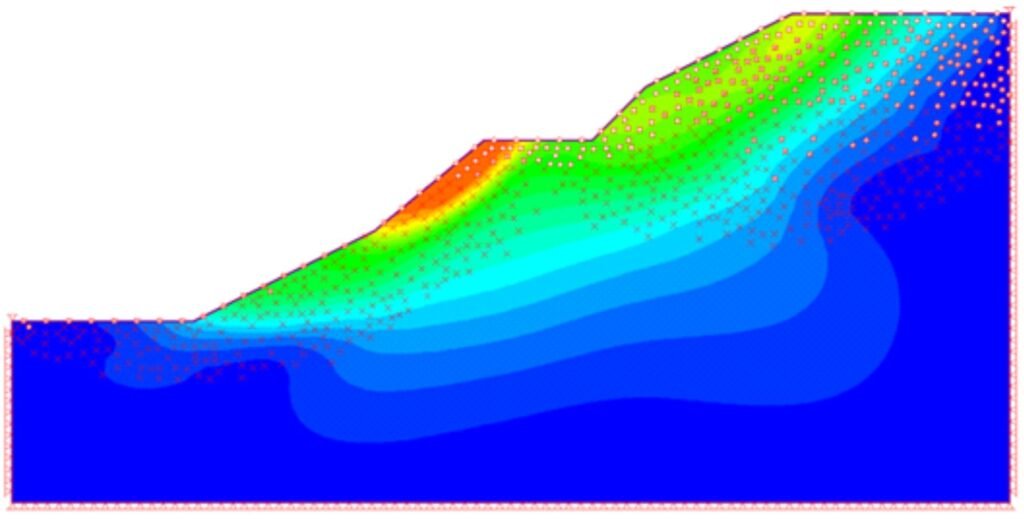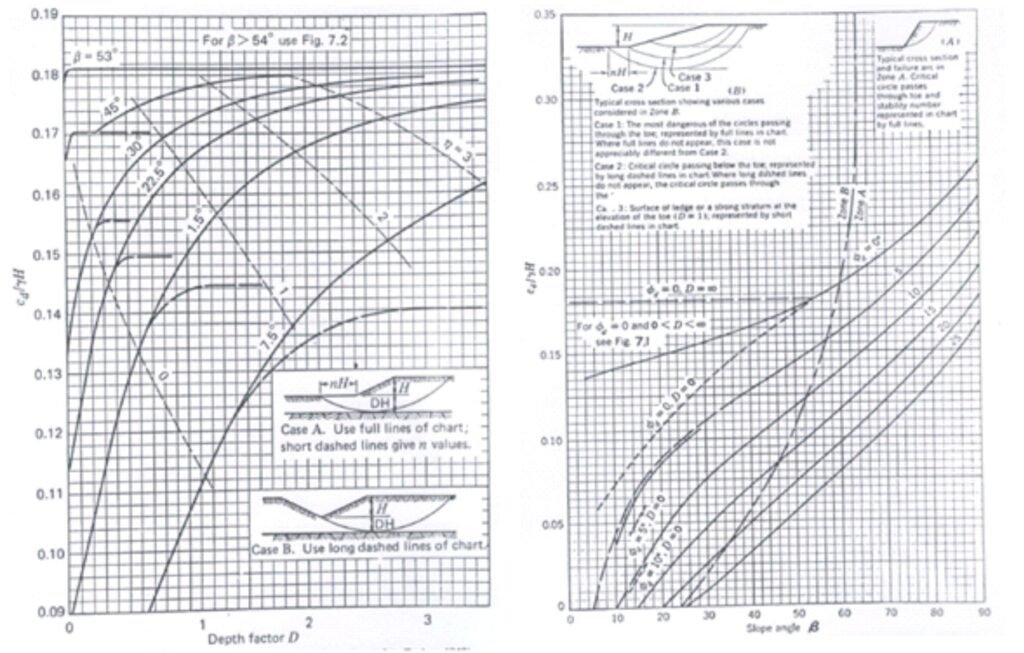

The use of softwares and design abacuses for slope stability analysis
As in any other branch of Civil Engineering, very powerful and relatively easy to use computer programs are now available to carry out slope stability analyses. At the same time, it is possible to use the old design abacuses, developed since the 1940s. Therefore, some questions arise: do the old design abacuses have any application today? what conditions must be fulfilled to use a software correctly? when is it advisable to use each design tool? Read on to find the answers to these questions...
Content
The use of software for slope stability analysis
As we all know, we currently have very powerful and relatively easy to use computer programs to carry out slope stability analyses. We also have the old design charts or abacuses, developed from the 1940s onwards, at a time when, obviously, technological development was not what it is today. In a way, these abacuses were the programs available in the past.
Now, as Geotechnical Engineers we must take advantage of technology, but not abuse it. And, in addition, it is necessary to optimize time and costs related to the analysis. The question is, then, when to use a software and when to use a design abacus.
Obviously, as in any other branch of Civil Engineering, everything will depend on the project being carried out and the available data. Thus, for projects in which the shear strength parameters have been carefully estimated (from special triaxial tests on undisturbed samples), in situ pore pressure measurements are available (by means of piezometers), and, in addition, the behavior of a complex slope in terms of its shape and stratigraphy is being studied, computer analyses are likely to provide the optimal solution (i.e. the least costly solution - not only in terms of construction, but also in terms of labor-hours spent on design in the office - and the best technically adapted to the problem under study).

Figure 1 Slope stability analysis using a program based on finite element analysis. (Source: https://www.geoengineer.org/software/rs2).
Nowadays, softwares based on the finite element method (FEM, see Figure 1) are very popular for slope stability analysis. However, it is very important to note that most of the constitutive models available in this type of programs have as a fundamental parameter the deformation modulus E in its different variants, a parameter whose estimation is of a very high complexity, given the soil nonlinear behavior and its dependence on the strain level (in this regard, see https://geo-webonline.com/que-significa-que-el-suelo-tiene-un-comportamiento-no-lineal/). Therefore, in order to obtain realistic results, it is necessary to properly estimate this soil parameter.
Usefulness of abacuses for slope stability analysis
When to use design abacuses? Although it sounds a bit strange, these design abacuses (the old "softwares", as mentioned above) are very useful for routine projects, in which geomechanical parameters are determined from correlations based on SPT and CPT tests, or from index soil properties and conventional shear strength tests (typically direct shear and unconfined compression tests). In these cases, given the available data, it is not advisable to use very sophisticated calculation methods, and it is usually sufficient to use design abacuses to arrive at an optimal solution.
In addition, although few engineers today apply this practice, design abacuses can be used to make preliminary estimates on complex projects, or to perform a rough check on computer program analyses. A way to get an order of magnitude of the problem quickly.
It should be noted that an important advantage of design abacuses is that they are simple and easy to use. As an example, Figure 2 shows the abacuses proposed by Taylor in the 1940s for slope analysis in clays based on total stresses.

Figure 2 Taylor´s abacuses for slope stability analysis (Source: modified from Huang, 1983).
I invite you to appreciate Taylor's genius in developing this tool. Simply by knowing the height of the slope H, its inclination β, the unit weight of the material γ, and estimating the depth DH that reaches the failure surface below the base of the slope, it is possible to estimate the mobilized cohesion cd and, from there, the factor of safety. Imagine the amount of calculations and revisions Taylor must have made to arrive at these graphs, whose main characteristic is, as I mentioned earlier, simplicity.
Comments on slope stability analysis tools
Based on the above, it is possible to highlight three aspects of practical importance for projects:
- Design abacuses are useful for making preliminary estimates of the stability of complex slopes, as well as for slope design in routine projects of relatively uniform stratigraphy, in which geomechanical parameters are often estimated from correlations and/or conventional laboratory tests.
- Specialized software should only be used when properly obtained geomechanical parameters are available from special in situ and laboratory tests. Special care should be given to the determination of the modulus of deformation E of the ground when using FEM-based programs.
- Softwares can be very useful to perform parametric analysis to study the influence of different variables in a given stability problem.
Finally, I would like to emphasize that, even though we are in an era dominated by technology, it is important to always apply the engineer's judgment, both at the time of analysis and when interpreting the obtained results.
References
- Abramson, L; Lee, T; Sharma, S. & Boyce, G. (1996) “Slope Stabilization and Stabilization Methods”. John Wiley & Sons, INC. USA.
- Huang, Y. (1983) “Stability Analysis of Earth Slopes”. Springer. USA.